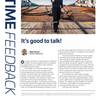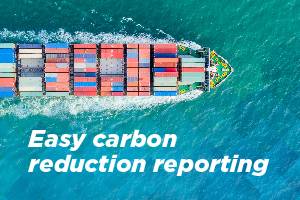Five Tips to Keep Workers Safe in 2024
The maritime industry accounts for more than 90% of global trade and employs over 3 million people in the United States, and like other modes of transportation, our industry encounters unique risks. Waterfront workers are exposed to various hazards such as heavy machinery, hazardous substances, extreme weather and long hours. If not properly managed, these hazards can result in serious injuries, illnesses and even fatalities. That is why ensuring the safety of waterfront workers is a top priority for all of us who work in the maritime industry. Not only does it protect the lives and wellbeing of workers, but safe operations improve productivity, efficiency and culture…. not to mention, it’s just the right thing to do.
Outlined below are five key measures that will help ensure the safety of your waterfront workers in 2024. We believe that implementing these measures will help ensure a safe and healthy work environment for your waterfront workers while achieving your business goals. Our aim is to provide you with practical and reliable suggestions on how to improve your maritime safety performance and start the new year out strong.
Effective training
A well-implemented safety training program not only ensures the wellbeing of workers but also proves to be economically beneficial. It's estimated that for every dollar invested in these programs, there's a return of about $4, demonstrating both time and cost savings while boosting productivity. Effective training (read those two words again) is a critical aspect of safety for your workforce. Training programs should be comprehensive, covering all aspects of safety, including handling of cargo, operating machinery and emergency response procedures. In 2024, enhance your training programs by ensuring they are up to date with the latest best practices, protocols and procedures.
Adherence to safety standards
Adherence to safety standards is a nonnegotiable aspect of maritime safety. Safety standards evolve as PPE, equipment, work processes and technology progress, and it can be hard to keep up with the latest changes. In 2024, keep an eye out for updates to existing standards and implement any new ones introduced as recommended by the Occupational Safety and Health Administration (OSHA). The Maritime Advisory Committee on Occupational Safety and Health (MACOSH) and we at the National Maritime Safety Association (NMSA) are two organizations that can help you find the resources you need to stay up to date on emerging changes and new safety standards.
Use of safety equipment
Providing workers with adequate and suitable safety equipment is not only vital to a good safety program, but it’s also an opportunity to show that you care about your workforce’s safety. This includes personal protective equipment such as helmets or hard hats, safety shoes, high-visibility clothing, and fall protection systems for work at height. Further, there are always specific needs for different types of waterfront work which means you will need to ensure the PPE you provide is what your workers need to safely accomplish their job. The current boom in “consumable AI” has started to change how we think about PPE and machine-mounted safety technology. In 2024, ensure that all your workers have access to the necessary safety equipment and are trained to use them correctly, but likewise, investigate new and emerging technologies that may enhance your safety programs.
Regular safety audits
Regular safety audits can help identify potential hazards and implement corrective measures. The U.S. Coast Guard, for example, tracks a variety of safety metrics, including the number of serious marine incidents and commercial mariner injuries. In the new year, if you are not already, consider starting a program to conduct regular safety audits to ensure the safety of your work environment (aboard cargo vessels, warehouse operations, workshops M&R, etc.). These should not be used to put your employees under a microscope and hand out safety violations like they are an Initech TPS report (watch the movie Office Space if you need context). But it is a chance to engage your longshore workers in the field, see where your company can improve its daily procedures and grow the safety programs to continually improve work environments for your workers.
Promotion of safe work practices
Moving into 2024, continue to promote safe work practices among your workers and look for opportunities to gain more insight into the practices your workforce is using and why they have been created. It will go a long way if you start the new year out by listening to your workforce and implementing necessary changes to work practices based on their direct input. If you don’t know where to start and that seems like a heavy lift, it may be useful to use the findings from your safety audit. By checking in with your workers and studying your internal procedures, you can jump-start your safety culture in the new year.
As we start the new year, we should remain committed to taking measures (hopefully some of these) to make sure our workforce has a safe and healthy place to work. Don’t think about these as huge undertakings but as a part of your company’s culture and safety evolution. Start small and work your way up. Connect with your workforce, keep up with industry best practices, and you will promote a safe and healthy working environment for all your waterfront workers. Use the tips we provided, put in the work, and you can make 2024 a safe and successful year!
The views expressed in this article are solely those of the author and do not represent the opinions or endorsements of any organization or entity. Readers should use their own discretion and consider multiple sources of information when forming their own opinions or making decisions.















